
I’m a bit late to the party on this one, but I’ve been away travelling for a few weeks and have only just had time to digest the magnificence of Sprocket Vault’s latest heroic venture into the Hal Roach vaults.
If you’ve had a browse around this blog for any length of time, you’ve probably figured out that I’m a huge Charley Chase fan. Playing an ordinary man to whom extraordinary things happened, his mixture of natural human comedy with outlandish plots and gags are a knockout combination. To me, Chase had one of the most fertile minds of any of the great comics, and yes, I include Chaplin, Keaton, Laurel et al in that. He’s also one of the most charming performers. Add to his comedic gifts the wonderful Hal Roach stock company and Le Roy Shield music so familiar from the Laurel & Hardy films, and you have an incredibly likeable body of work.
As with volume 1 of this series, I have to begin by awarding this DVD five stars simply for existing. It’s too easy to forget the limbo these films were in for far too long, difficult to see without access to a 16mm print library. Quite simply, nobody wanted to put this stuff out there. I remember first reading about these films in Leonard Maltin’s book THE GREAT MOVIE SHORTS years ago and longing to see them. After spotty acquisitions of the forbidden fruits via TCM, Ebay, old VHS from friends, mailing lists and the like, I finally picked up an almost-complete set of the films on bootleg DVD in 2009. Looking at these beaten up ex-VHS or 16mm transfers made my eyes water and did the films no favours at all. Nevertheless, I treasured those discs as the rare jewels they were, and assumed it was the best I would ever get.
Not so. Fast forward ten years and here’s the second chronological set in Sprocket Vault’s series. Not only are the films now on an official DVD, but they look beautiful, feature original titles and come with authoritative commentaries. If that weren’t enough, there are bonus features, including an incredibly rare Spanish-language version of Chase’s LOOSER THAN LOOSE, UN CANA EL AIRE!
What about the films themselves, though? How do those forbidden fruits taste? Well, if you’re not a completist and this is your first Chase purchase, you won’t be disappointed. Of the shorts featured here, at least four are among my all-time favourite Chase films, and most of the rate between good and excellent, too.
For a bit of context, these fifteen shorts were all made in 1932-33. Chase had settled into sound well by now and so the early talkie clunkiness is now almost entirely gone. He was starting to change his approach, adopting a more fussy, nervous character more suited to a man approaching 40 than the young man about town of his earlier work. For several of the films here he worked with brother James Parrott as director, an always fruitful partnership that inspired some creative comedies.
YOUNG IRONSIDES is one of the best films he ever made, full of original sight gags and situations that come thick and fast as Charley is hired to prevent Muriel Evans from taking part in a beauty competition. It develops into a three way game of cat and mouse between Charley, Muriel and a suspicious house detective tailing them both, with the highlight coming as Charley fashions himself a grass skirt of collars and enters the pageant as ‘Miss Hamburg’!
HIS SILENT RACKET is another classic, with Charley conned into being a partner in James Finayson’s failed dry cleaning business. Lots of great characters and visual gags in this one.
FALLEN ARCHES, IN WALKED CHARLEY, GIRL GRIEF and MR BRIDE are all other favourites of mine. The last is a particularly daring (for 1932) comedy in which Charley must act as a bride for his fastidious boss Del Henderson on a rehearsal honeymoon! The scenes of Charley being forced into a feminine role amidst everyone’s presumptions that they are a gay couple are very unusual, and take Chase’s comedy of embarrassment to new extremes.
Even more experimental are the technocratic NOW WE’LL TELL ONE, surreal ARABIAN TIGHTS and bizarre Tarzan spoof NATURE IN THE WRONG. Ever wanted to hear a lion speak with the voice of James Finlayson? Of course you have. Well, here’s your chance!
In fact, for L & H fans, there are lots of moments where the familiar stock company players shine: Anita Garvin vamps Charley in HIS SILENT RACKET; Billy Gilbert does his best Germanic bluster in LUNCHEON AT TWELVE; James C Morton and Eddie Dunn pop up in FALLEN ARCHES. You also get an introduction to some other great Roach co-stars who didn’t appear with the boys, including Gale Henry and Jimmie Adams. Richard Roberts’ commentaries fill in lots of great detail on these performers, by the way.
The leading lady for most of these films is Muriel Evans, who is a charming performer, if not quite Thelma Todd. Thelma does make one appearance, in THE NICKEL NURSER, a wonderful, underrated comedy with Charley an efficiency expert hired to teach a millionaire’s daughters the value of money. Throw in a Greta Garbo-esque maid, a jealous butler and some deception, and you have a bedroom farce worthy of Chase’s silents.
Of course, being a chronological set, you do get the ebb and flow of inspiration that naturally comes with any art form. Chase’s personal and professional lives were both strained at the time, and occasionally it shows with less inspired films like SHERMAN SAID IT or FIRST IN WAR. However, even the lesser efforts are watchable, thanks to Chase’s charm and natural humour.
In conclusion, if you’re at all a fan of the Hal Roach studios, this (along with volume 1) is an essential purchase. If this set is your entry point to Chase, I envy you – there’s loads to enjoy here and it’s just the tip of the iceberg. If, like me, you’re familiar with the films, you’ll see them with fresh eyes in this quality and learn lots from the commentary tracks. Of course, for Chase devotees, the inclusion of UNA CANA EL AIRE is worth the price of admission alone. Like many of Roach’s phonetic versions, it’s much longer than its English language equivalent, and features extra gags. Among the gems are some funny toupee gags, and a brilliant moment as Charley tries to cross a crowded dancefloor.
I’m so grateful that this DVD exists. Thanks to Richard M Roberts and Kit Parker at The Sprocket Vault for making it happen.
So, what are you waiting for? Go buy it!
Oh, and if you want more detailed discussion of the films, take a look at the Chase article in issue 9 of THE LOST LAUGH MAGAZINE, which covers his films from this period.

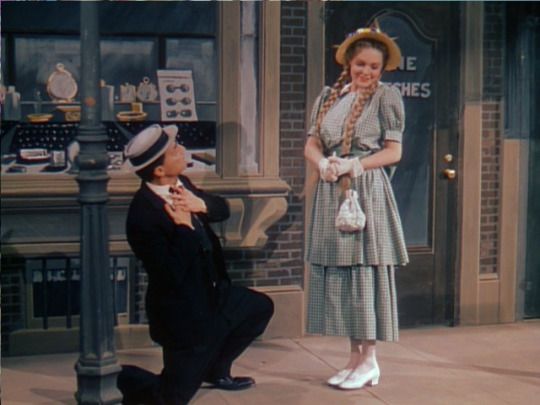 Keaton’s long career kept him working to the point where colour was much more widespread in the film and TV industry. As a result, there is lots of nice colour footage of him in his later years, but to see him looking more like the Buster we know from his classic silents, the best bet is HOLLYWOOD CAVALCADE. This 1939 feature was a vague retelling of the Mack Sennett story and Buster appears in an on-set pie throwing sequence (thus perpetrating the myth that he was another Keystone clown). It’s beautiful vivid colour, and there are even some lovely outtakes from the film showing Buster throwing pies and laughing. Sadly, neither film nor outtakes appear to be on YouTube, but there’s a brief snippet at 9:15 in this episode of the wonderful Keaton documentary A HARD ACT TO FOLLOW.
Keaton’s long career kept him working to the point where colour was much more widespread in the film and TV industry. As a result, there is lots of nice colour footage of him in his later years, but to see him looking more like the Buster we know from his classic silents, the best bet is HOLLYWOOD CAVALCADE. This 1939 feature was a vague retelling of the Mack Sennett story and Buster appears in an on-set pie throwing sequence (thus perpetrating the myth that he was another Keystone clown). It’s beautiful vivid colour, and there are even some lovely outtakes from the film showing Buster throwing pies and laughing. Sadly, neither film nor outtakes appear to be on YouTube, but there’s a brief snippet at 9:15 in this episode of the wonderful Keaton documentary A HARD ACT TO FOLLOW.


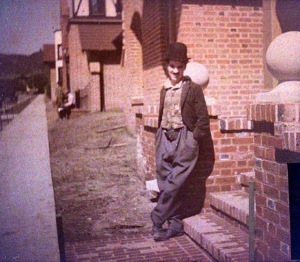

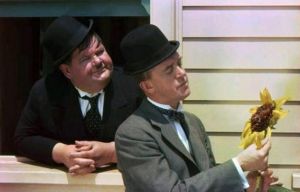
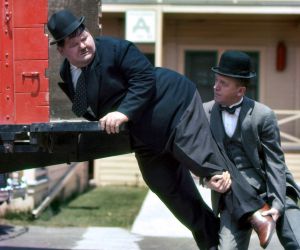
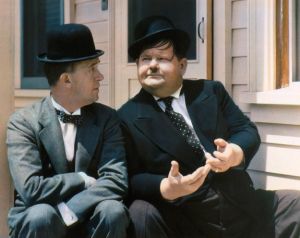








 Charley Chase has gone from being an under-represented figure on home video releases to having much of his classic work out there in superior quality. Thanks to DVD releases from Kino, AllDay Entertainment and Milestone films, a majority of his existing silent work can now be widely seen. In recent years, even his late sound shorts for Columbia have even been pulled from the vaults and released by Sony.
Charley Chase has gone from being an under-represented figure on home video releases to having much of his classic work out there in superior quality. Thanks to DVD releases from Kino, AllDay Entertainment and Milestone films, a majority of his existing silent work can now be widely seen. In recent years, even his late sound shorts for Columbia have even been pulled from the vaults and released by Sony. LOOSER THAN LOOSE, a charming romantic situation comedy, where much of the humour is down entirely to the wonderful performances of the cast;
LOOSER THAN LOOSE, a charming romantic situation comedy, where much of the humour is down entirely to the wonderful performances of the cast;